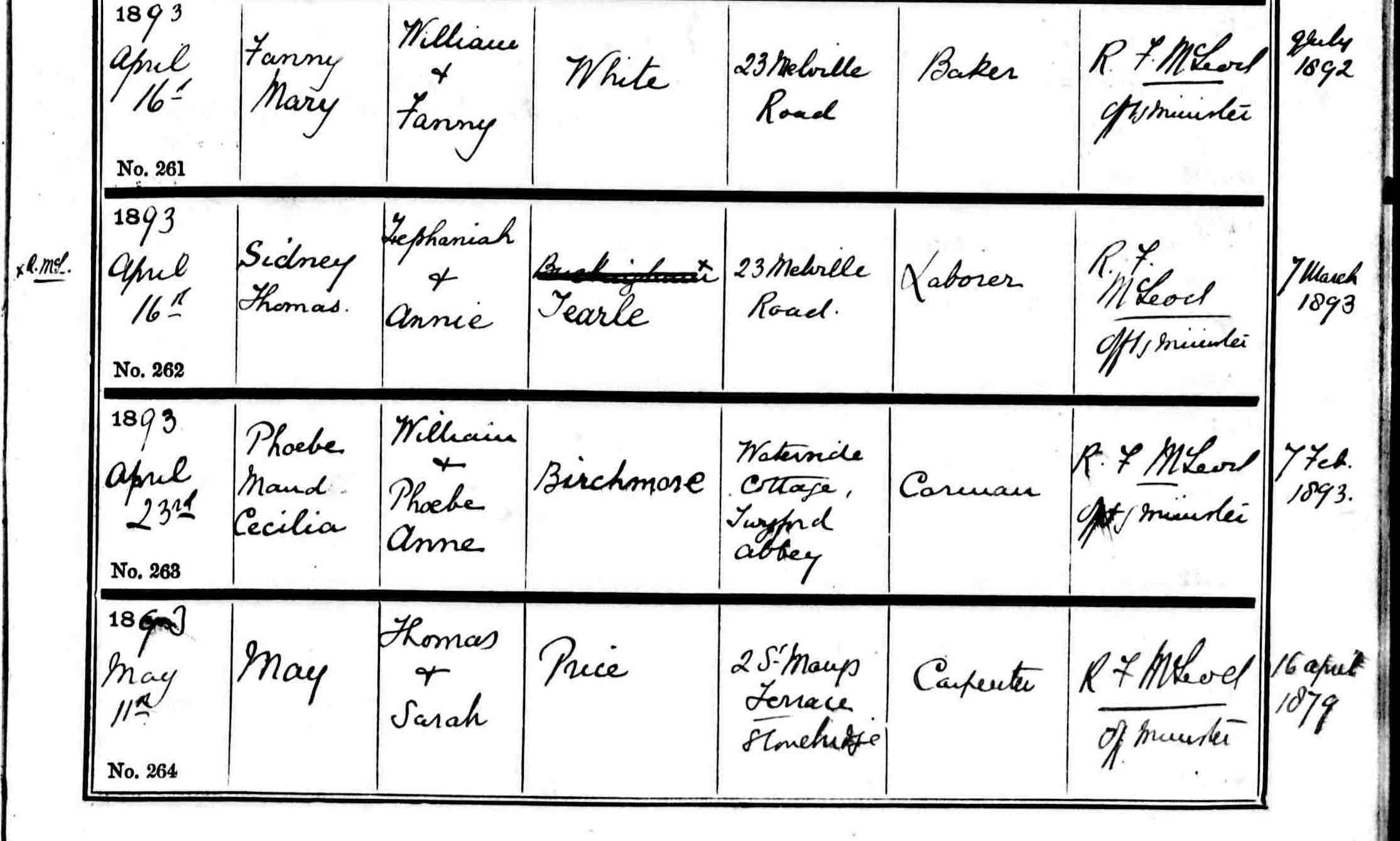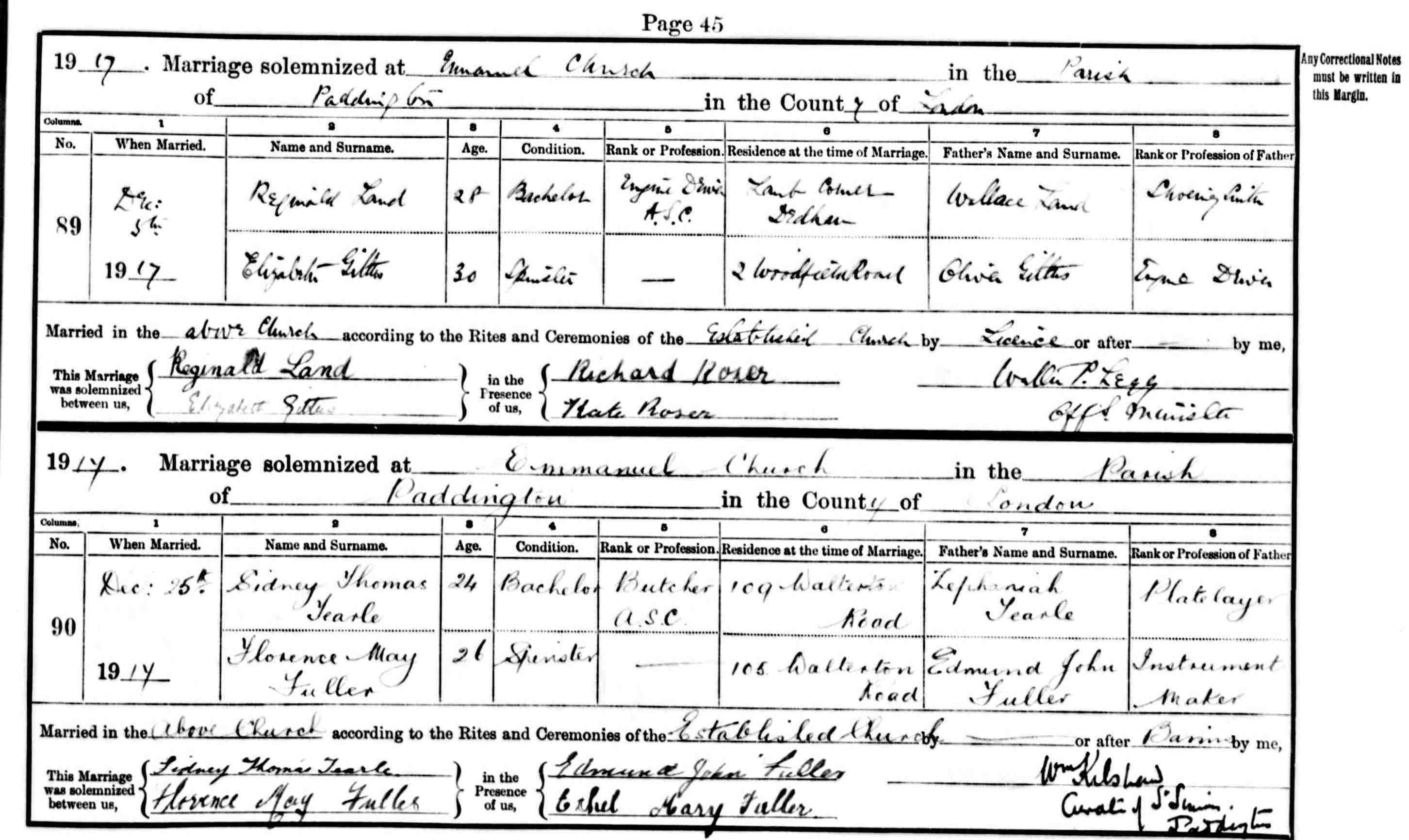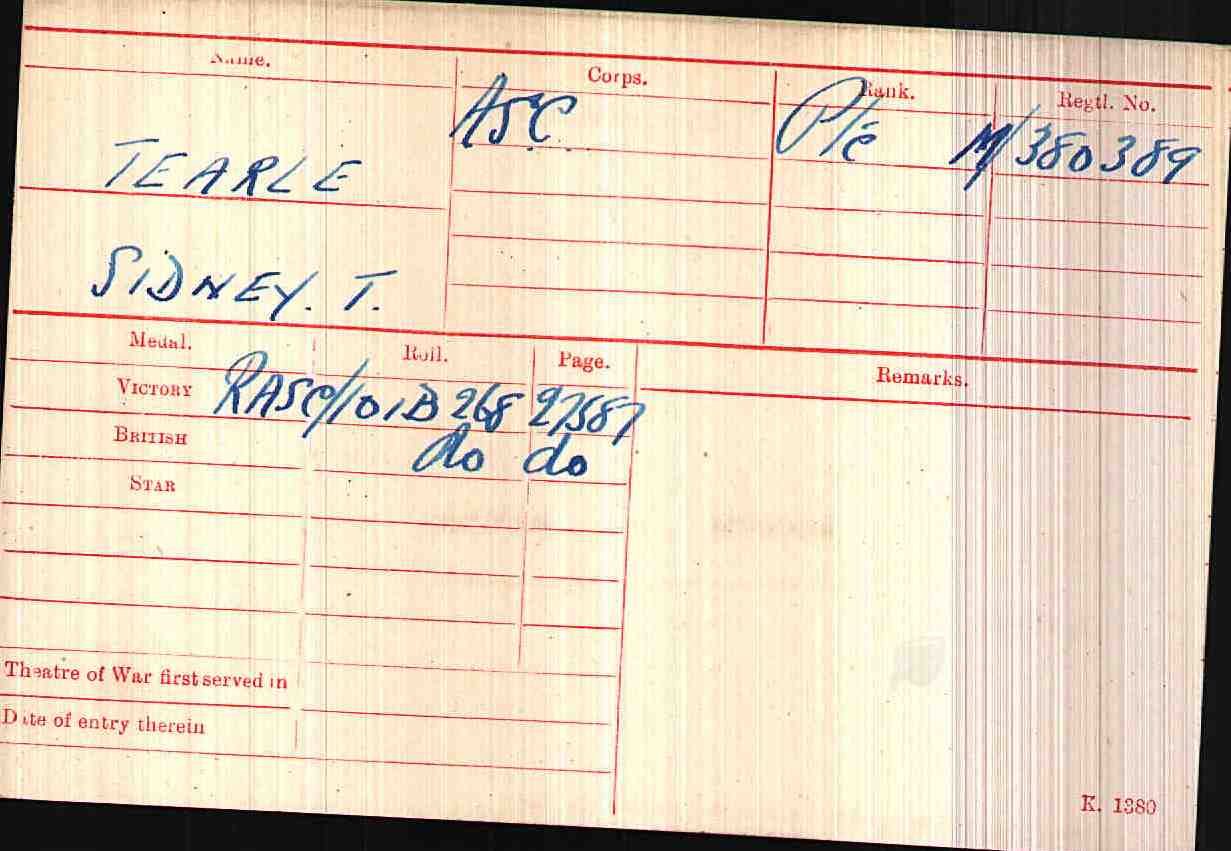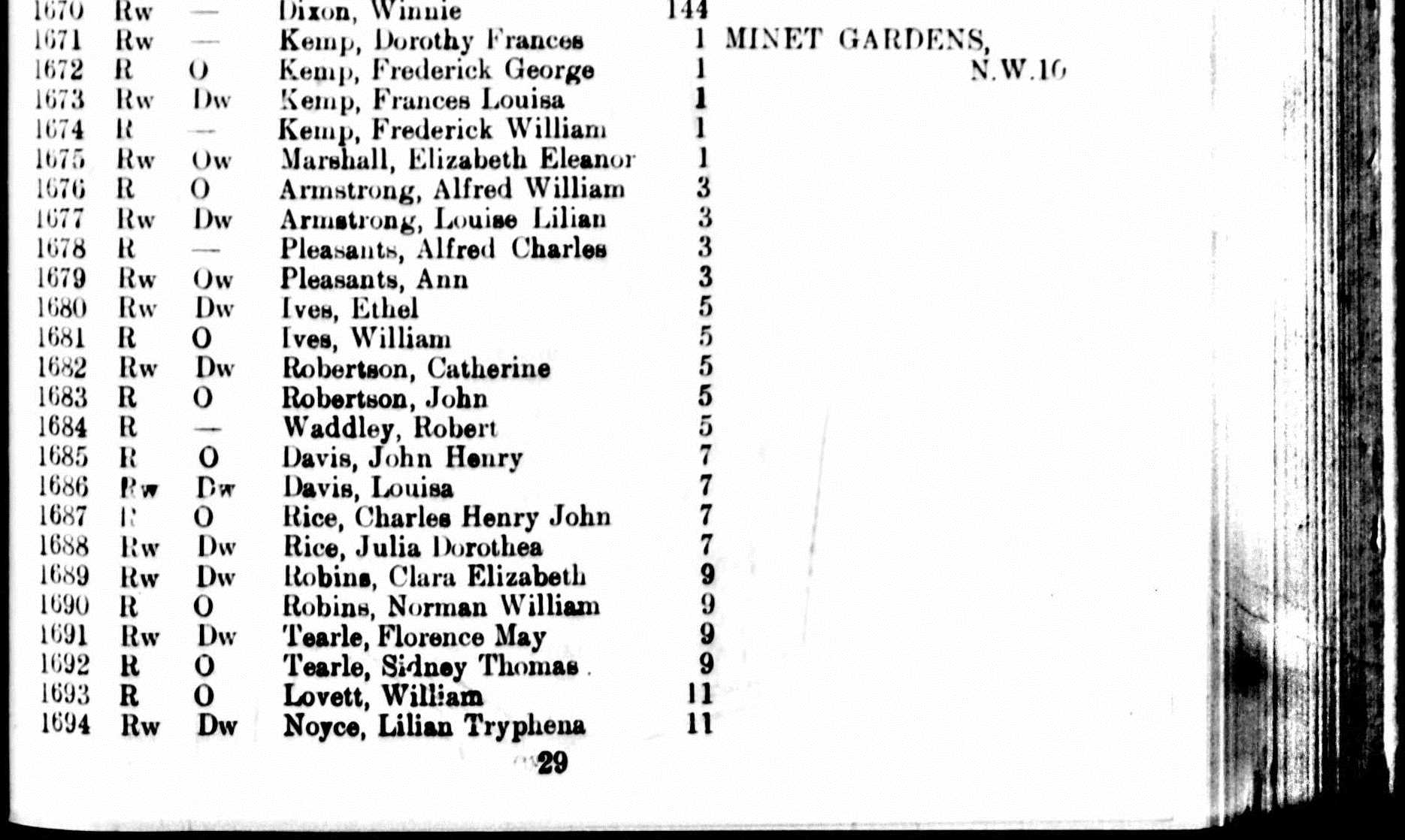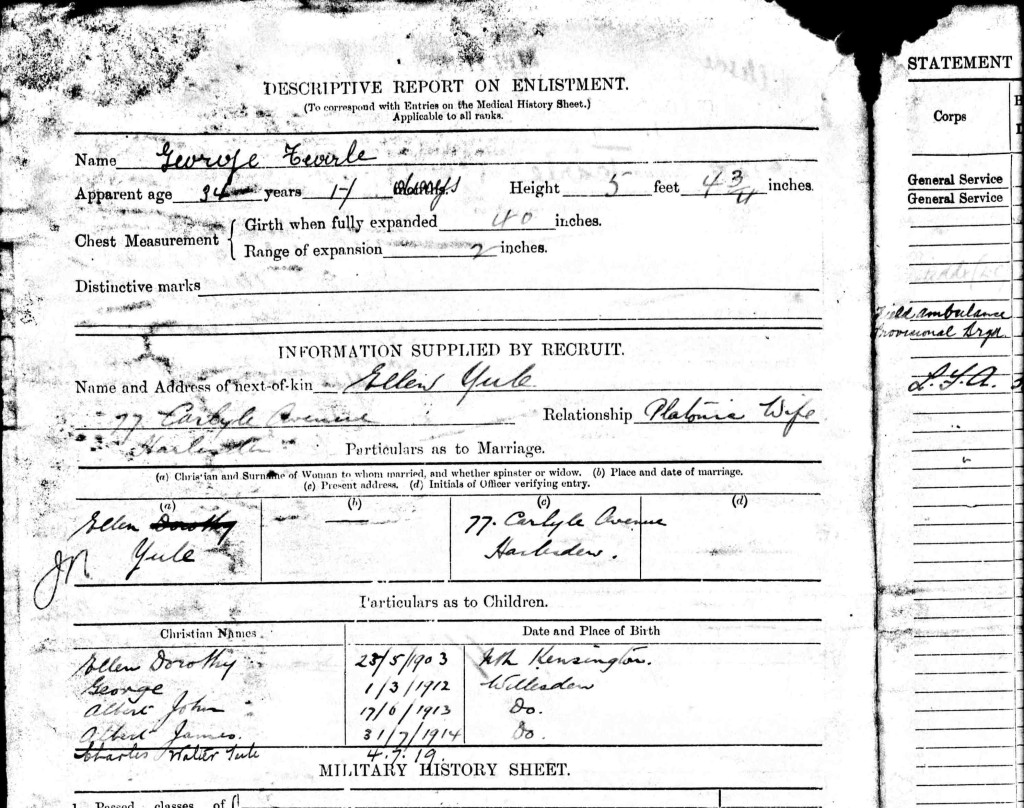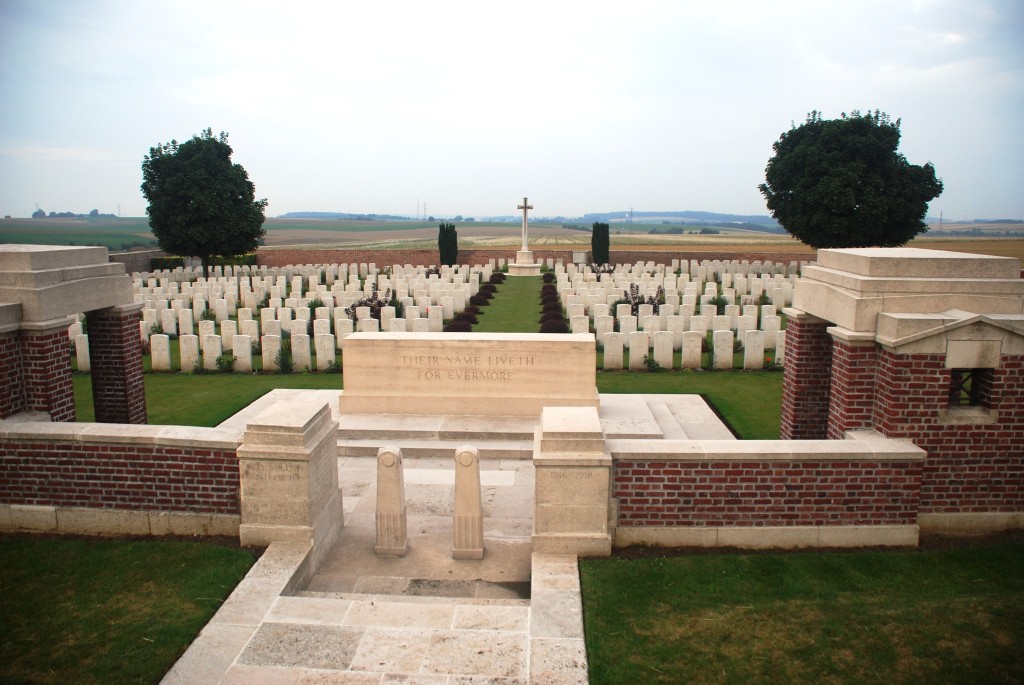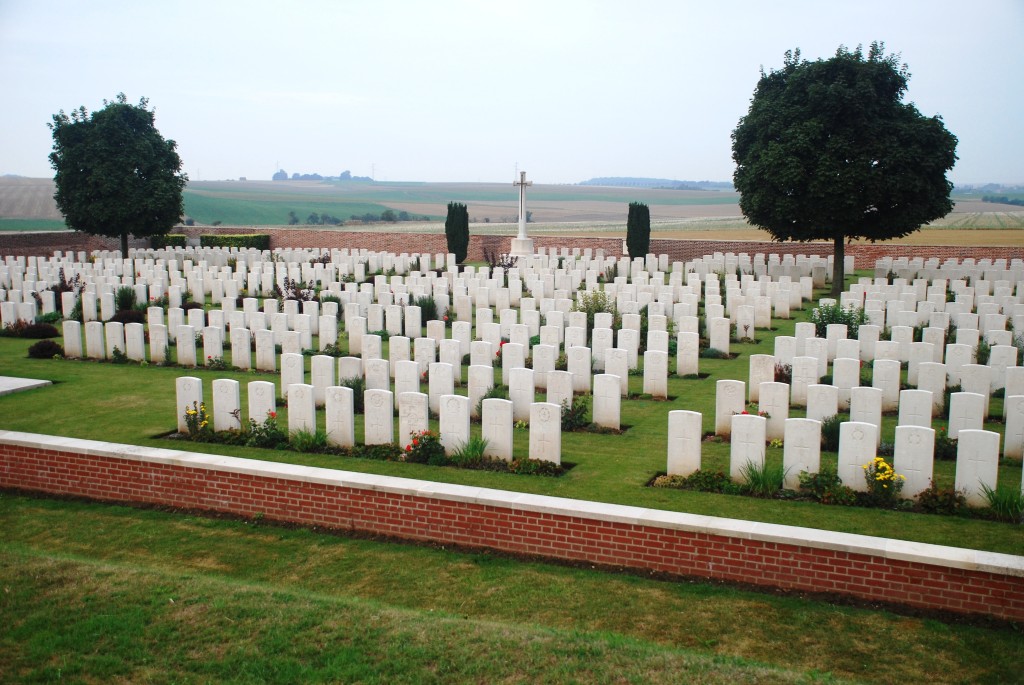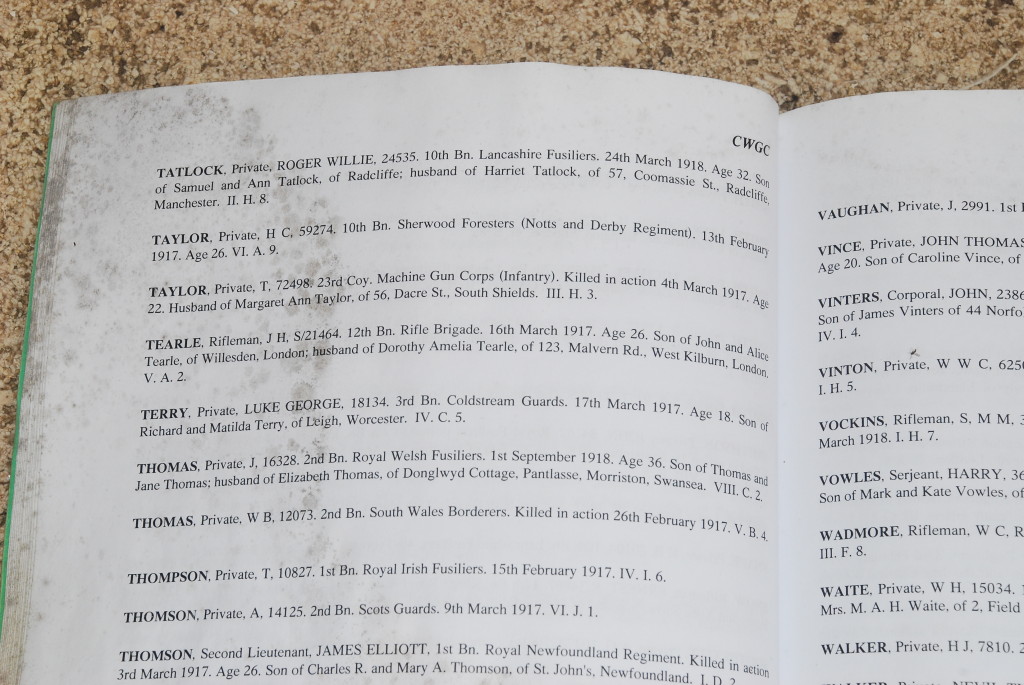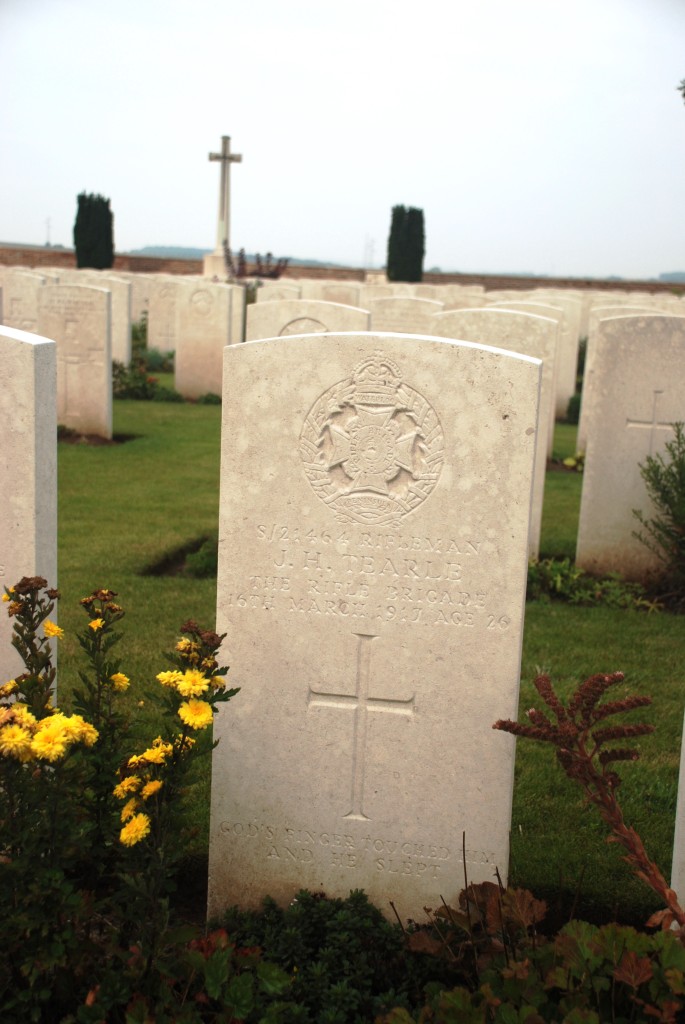Sidney Thomas Tearle was born to Zephaniah Tearle and Annie nee Buckingham on 7 March 1893 in Stonebridge, Willesden, London, and he was baptised a few weeks later. Because infant mortality rates were very high, particularly in London, parents wasted no time in getting their babies baptised. Helpfully for us, the minister has written Sidney’s birth date in the margin.
The genealogical details you need to know are that Zephaniah 1869 of Stanbridge was the son of single mother Jane Tearle 1844, of Stanbridge. She had three children: Minnie 1865 who died just a year later, Zephaniah, and Tryphena 1872, who tragically died in 1892, just 20 years old. Jane’s parents were John Tearle 1823 of Stanbridge and Eliza nee Irons. John was himself the only son of a single mother, Mary 1803 of Stanbridge, and she was a daughter of John Tearle 1770 of Stanbridge, and Mary nee Janes. And John 1770 was, of course, a son of John 1741 and Martha nee Archer.
The address, 23 Melville Rd, is the same for the 1901 census. Here, we find out that Zephaniah is a plate-layer on the railway and that both he and Annie had come directly from Stanbridge, in Bedfordshire. We will have a look much more closely at Zephaniah and Annie in another article, about them and their lives, and the other Tearle families who lived in Willesden. I thought I would show this page to help understand the neighbourhood that Zephaniah had moved to. He is working on or near the giant tangle of lines and trains that was Willesden Junction in the late Victorian and early 20th Century years. The people who live around him are decidedly working class; the one exception being the “Gentleman” Mr William Carpenter Hall, from 14 Park Rd.
In the 1911 census, Zephaniah and Annie have been married for 21 years, and have had five children, none of whom have died. Sidney is working for a butcher, as is Albert, his younger brother.
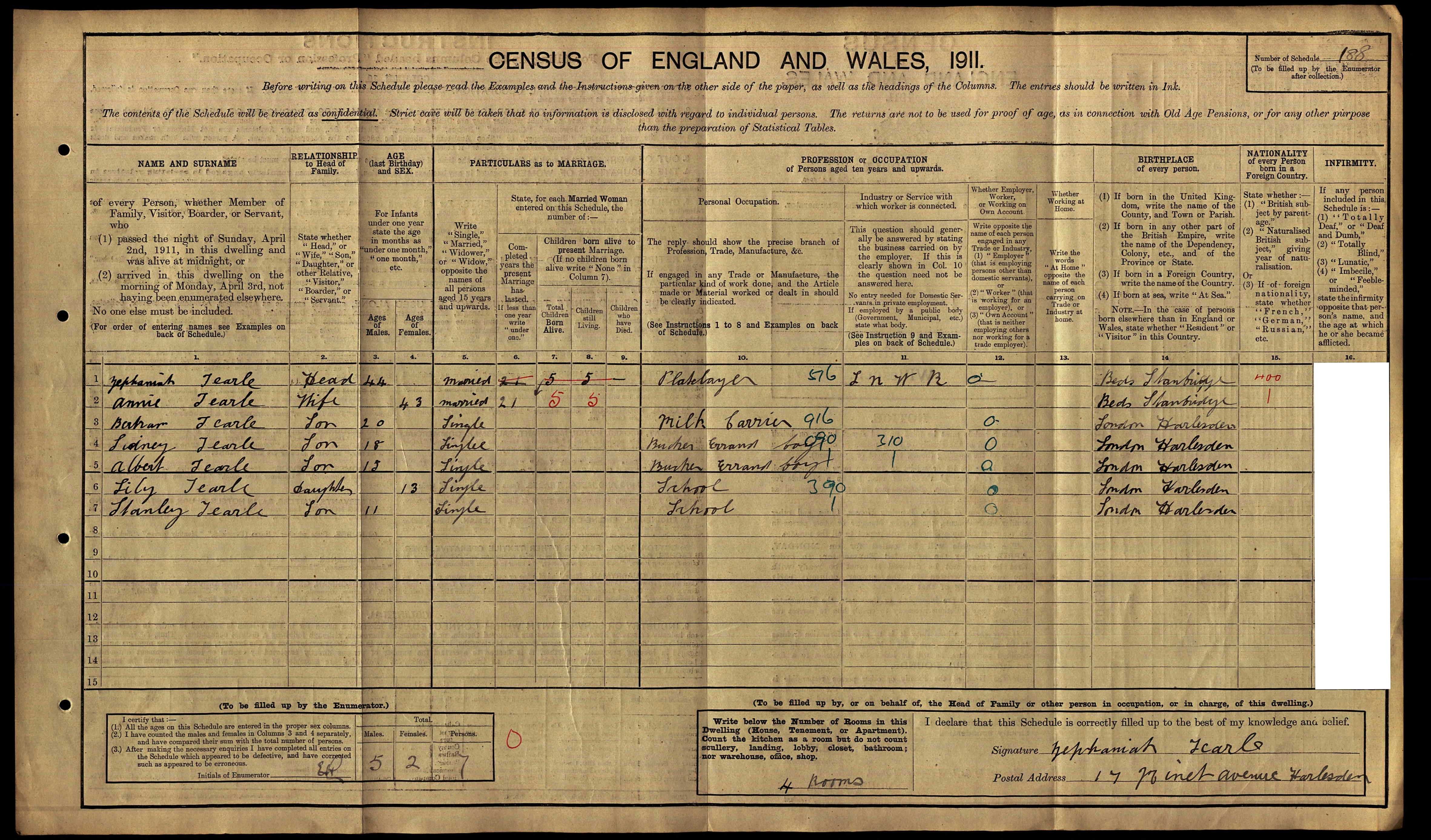
1911 census: Zephaniah 1869 and Annie, with Bertram 20 Sidney 18 Albert 15 Lily 13 Stanley 11 in Harlesden.
Since Sidney was 18 in 1911, then he was the perfect age (21yrs) to be dragged into WW1. Here is his entry in National Roll of the Great War:
The note is both interesting, and chilling. The date, November 1917 is interesting, because he married in 1917:
But look at the date! 26 December. Since he joined in November, and was on the Western Front in the same year, then there was not much time in which to have a wedding. You can see on the form that he was already a soldier (ASC) but that the army had signed him up and was about to use his butchering skills. I gather they were not expecting him to be engaged in too much fighting, because even basic training takes six weeks to two months.
The chilling part is that he was never out of range of the artillery, because he was delivering food and ammunition to the trenches – and then there is a list of some of the vast and most violent battles of the Great War. Arras, Vimy Ridge, Cambrai “and other sectors” says National Roll airily. Sidney was not in the Great War for as long as some of the other Tearles whose stories are told in National Roll, but he was in the thick of it.
There are just two items left in my catalogue of Sidney’s life: his medals card and his address once he returned to civilian life. Firstly, his medals card. However truncated the message is, it tells us most of what we need to know. This is another card that does not record a soldier’s entry into the Theatre of War, and as a result we have only the note from National Roll to tell us where he was, when, and what he did. In about 1922, he would have received by post his Victory Medal and his British Medal.
The last tiny dot of evidence I have for the life of Sidney Thomas is his address in 1932, from the Willesden Electoral Roll; Minet Gardens, NW10. We can see from the address that Sidney has not moved far from where his parents lived at 17 Minet Avenue, where they were in 1911. And Lilian Tryphena Noyce, living at number 11, is Sidney’s sister.
You take your culture with you; Zephaniah and Annie have brought the habits of the village with them, and living closely together is part of that culture.
